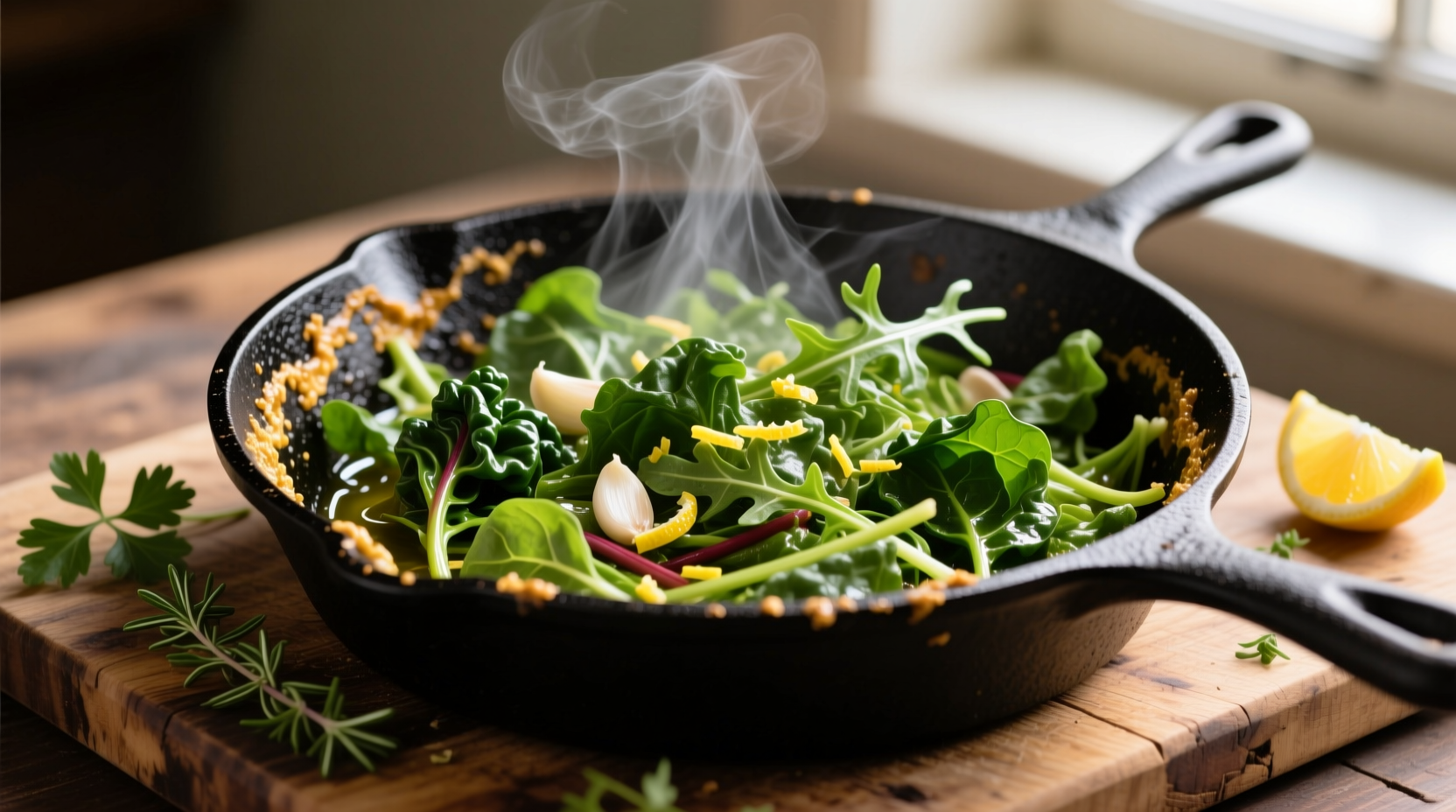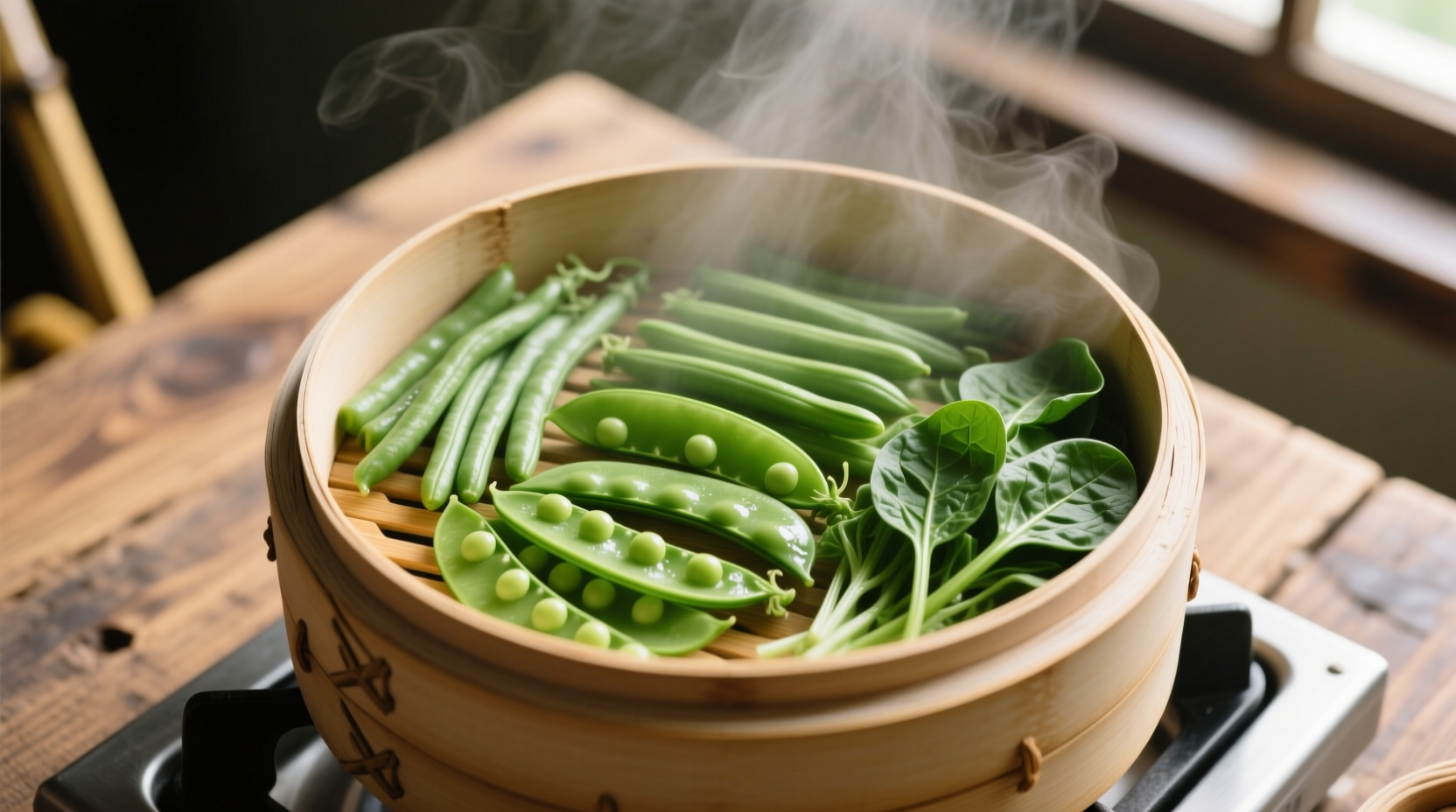Understanding Greens Cooking Times: Your Complete Reference
When you're standing in your kitchen with a bunch of fresh greens, knowing exactly how long to cook them makes the difference between perfectly tender vegetables and a mushy mess. This guide delivers precise timing information based on culinary science and professional chef techniques.
Why Cooking Time Varies Across Different Greens
Not all greens cook at the same rate. The thickness of leaves, water content, and natural fiber structure create significant differences in required cooking duration. Understanding these variations prevents undercooked bitterness or overcooked disappointment.
| Green Variety | Boiling Time | Sautéing Time | Steaming Time | Best Texture Indicator |
|---|---|---|---|---|
| Spinach | 2-3 minutes | 3-4 minutes | 2-3 minutes | Leaves fully wilted, vibrant green |
| Kale | 5-7 minutes | 6-8 minutes | 5-6 minutes | Stems tender when pierced, deep green color |
| Collard Greens | 10-15 minutes | 12-18 minutes | 8-12 minutes | Leaves pliable, no raw bitterness |
| Swiss Chard | 4-6 minutes | 5-7 minutes | 4-5 minutes | Stems slightly translucent, leaves vibrant |
| Mustard Greens | 6-8 minutes | 7-9 minutes | 5-7 minutes | Bitterness mellowed, texture tender-crisp |
Source: Oregon State University Extension Service
Key Factors That Change Your Greens Cooking Time
Several variables affect how long your greens need to cook. Recognizing these helps you adjust timing for perfect results every time:
Cooking Method Matters Most
Boiling greens submerges them completely in water, transferring heat faster than sautéing where only part of the green contacts the hot surface. Steaming provides gentle, even heat without water leaching nutrients. Each method requires different timing:
- Boiling: Fastest method but can cause nutrient loss; reduce time by 1-2 minutes if using salted water
- Sautéing: Allows flavor development with aromatics; requires constant stirring for even cooking
- Steaming: Preserves nutrients best; check greens every 2 minutes to prevent overcooking
Leaf Size and Thickness
Professional chefs consistently emphasize that leaf size dramatically impacts cooking duration. Large kale leaves might need 8 minutes while baby kale cooks in 3-4 minutes. Always chop heartier greens into uniform pieces for even cooking.
Altitude Adjustments
According to the USDA Food Safety and Inspection Service, water boils at lower temperatures at higher elevations, increasing cooking times by 25% above 3,000 feet. Add 1-2 minutes to standard timings if you live at altitude.
Step-by-Step Cooking Instructions for Perfect Greens
For Quick-Cooking Greens (Spinach, Arugula, Baby Kale)
- Wash greens thoroughly in cold water
- Heat 1 tablespoon olive oil in skillet over medium heat
- Add minced garlic (optional) and sauté 30 seconds
- Add greens in batches, stirring until wilted (3-4 minutes)
- Season with salt, pepper, and lemon juice
- Remove from heat immediately when vibrant green
For Heartier Greens (Collards, Mature Kale, Mustard Greens)
- Remove tough stems and chop leaves into 2-inch pieces
- Bring 4 cups water or broth to simmer in large pot
- Add greens, pressing down to submerge completely
- Cover and simmer 10-15 minutes until tender
- Drain excess liquid and season to taste

Visual Indicators of Perfectly Cooked Greens
Timing guidelines provide a starting point, but visual cues give the most reliable indication of doneness:
- Color change: Bright green when raw becomes deeper, richer green when cooked
- Texture transformation: Stiff, crisp leaves become flexible and tender
- Volume reduction: Greens typically reduce to one-third their raw volume
- Stem test: Pierce thicker stems with fork—they should offer slight resistance but not be crunchy
Avoid These Common Greens Cooking Mistakes
Professional chefs consistently identify these timing errors that ruin greens:
- Overcrowding the pan: Adding too many greens at once lowers temperature and steams instead of sautés (add 2-3 minutes to cooking time)
- Adding salt too early: Can draw out moisture and increase cooking time by 1-2 minutes
- Ignoring carryover cooking: Greens continue cooking after removal from heat (remove 30 seconds before perfect)
- Not tasting during process: Always test a leaf 1 minute before expected finish time
Storing and Reheating Cooked Greens Properly
Cooked greens maintain best quality when cooled quickly and stored in airtight containers. According to food safety guidelines from the USDA Food Safety and Inspection Service, properly stored cooked greens last 3-5 days in the refrigerator. When reheating:
- Steam gently for 2-3 minutes to restore texture
- Avoid microwaving which creates uneven heating
- Add a splash of water or broth to prevent drying
- Never reheat more than once for food safety
Advanced Timing Techniques from Professional Kitchens
Top chefs use these precision methods to perfect greens cooking:
- Blanching shock: Boil greens for 75% of recommended time, then plunge into ice water to stop cooking
- Two-stage cooking: Briefly boil heartier greens before finishing in pan for complex flavor development
- Residual heat finishing: Remove from heat 30 seconds early and let residual heat complete cooking
When to Adjust Standard Cooking Times
Certain situations require timing modifications beyond standard guidelines:
- Adding acidic ingredients: Vinegar or lemon juice added early can increase cooking time by 1-2 minutes
- Cooking with broth instead of water: May reduce time slightly due to higher boiling point
- Using frozen greens: Cook 1-2 minutes less than fresh as they've already been blanched
- Older greens: May cook faster as cell structure breaks down over time











 浙公网安备
33010002000092号
浙公网安备
33010002000092号 浙B2-20120091-4
浙B2-20120091-4